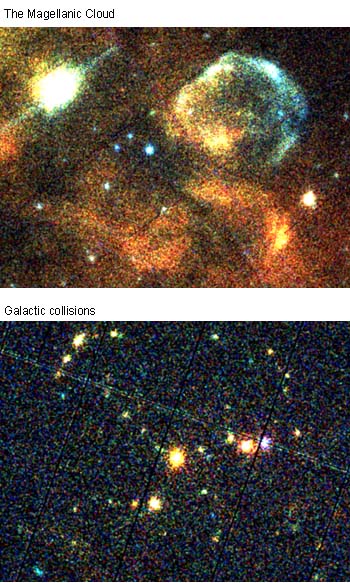Astro-E, the Japanese-US X-ray observatory burned up in the atmosphere just minutes after take off. The telescope was launched by the Japanese Institute for Space and Astronomical Science (ISAS) - Japan's scientific space agency - using a M-V rocket off the Japanese island of Kyushu at 3:30 GMT this morning, but problems with the first stage of the rocket meant that the telescope could not reach orbit. The $105 m Astro-E was primarily a spectroscopy mission to complement the existing NASA Chandra telescope than was launched last July. Two months ago the European Space Agency (ESA) launched XMM-Newton, the largest X-ray telescope ever built but Astro-E was to have used a unique helium-cooled bolometric detector to measure the energies of individual X-ray photons with 10 times the sensitivity of previous instruments.

Meanwhile, ESA this week released the first two images from XMM-Newton. One shows the Magellanic Cloud, with hot gas released from supernova explosions and new stars being created in a interstellar nursery. The second image shows the different effects of galactic collisions. “In one collision a black hole shows through a dense cloud of material as an intense blue glow. In another a series of massive stellar explosions, triggered by the collision, emit copious X-rays, seen here as a red halo,” says Martin Turner of the Leicester University.



